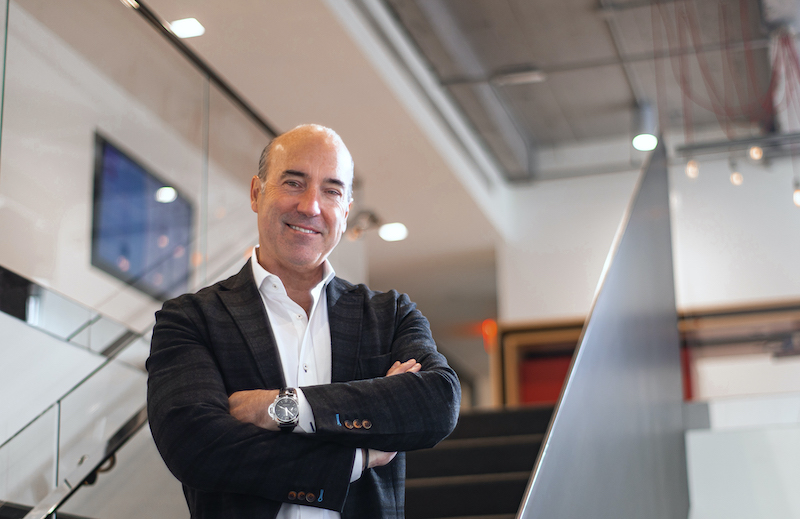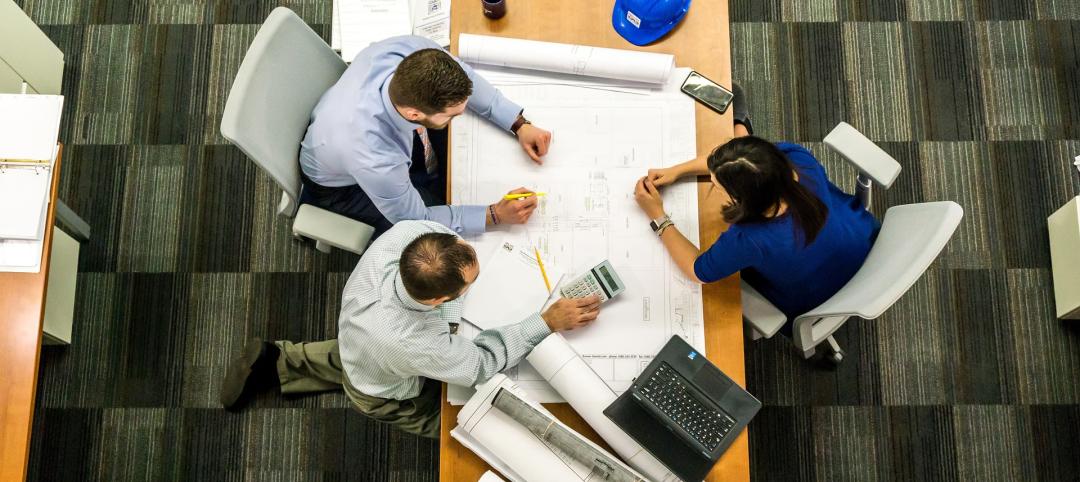Leading our company through the pandemic put everything we knew to the test. Teams were forced to pivot strategy, behaviors, and tactics for the protection of the business during a once-in-a-generation public health crisis. As the pandemic evolved, new challenges arose, and with them, so did the leadership strategy necessary to navigate the crisis.
As we look to the future, there are some lessons we at Shawmut plan to take with us into the post-pandemic world. We should see 2020 as a unique learning opportunity and apply the valuable lessons we learned to the way we do business in the future – to rethink engrained practices, leadership styles, and outdated protocols.
Here are the top five strategies Shawmut adopted during the pandemic, which we credit for helping us to effectively navigate the crisis, and that we intend to uphold in the new, post-pandemic world.
1. RECOGNIZE THE IMPORTANCE OF HANDS-ON LEADERSHIP AND NIMBLENESS
In a time of crisis, you need not only leaders with vision but also team players who can roll up their sleeves to get the job done – people who are engaged and part of the solution, who can not only bring the vision but also execute it.
During the early days of the pandemic, companies were forced to make decisions with little or mixed guidance from authorities. We needed to move quickly, be decisive, analyze the best information we could get, and leverage networks to make decisions to keep moving forward without the luxury of time.
THE SHAWMUT STRATEGY To make these fast-paced, real-time decisions in response to rapidly changing conditions, the executive leadership team immediately moved to 15-minute daily huddles to work faster to get aligned, uncover critical boots-on-the-ground data, and communicate more to help the business thrive.
This well-balanced, hands-on leadership style provides a greater understanding of your business, clients’ needs, develop a deeper rapport, and build employee morale. Today, strategy isn’t enough. The leadership need to be equally skilled at execution and be willing and able to make adjustments quickly.
2. EXPRESS CONCERN FOR WELL-BEING AT AND OUTSIDE OF WORK
The pandemic certainly took a mental toll on everyone. For myself, I recognized it was critical for me to manage my own energy when addressing the company and help overcome the pandemic-induced languishing – a sense of stagnation and emptiness – that many were experiencing, to keep energy levels high and help teams thrive.
THE SHAWMUT STRATEGY We began each executive meeting by asking, “How are our people doing, and what do they need?” We worked to acknowledge our people effusively and publicly for all the hard work being done to help us come back stronger. Being cognizant of energy drains and how to manage energy levels of teams to help them thrive is a continuing responsibility and goal for our leaders.
Similarly, as the virus raged on, it became commonplace for managers and coworkers to inquire about each other’s well-being outside of work, especially as we saw endless injustices impact many of our communities. It was important to think outside of our own experiences to make sure we put ourselves in others’ shoes and take the time to reach out if someone was hurting.
Continuing this practice brings a level of humanity to the workplace and the acceptance of the whole person who works with you and for you. These empathetic actions truly build strong bonds and feelings of belonging no matter what is happening around us and contribute to a strong organization.
3. NURTURE GRASSROOTS INNOVATION
When faced with a new set of challenges and a race to find solutions, we turned to grassroots innovations to help overcome new barriers caused by the pandemic.
At the onset, our field teams looked to reduce hand-to-hand, face-to-face interaction and improve the ways we track our staff and partners working onsite
THE SHAWMUT STRATEGY Our people helped develop innovative systems that led to the creation of Shawmut Vitals — a custom-built platform designed to check for COVID-19 symptoms and manage contact tracing.
Thanks to this and other innovative, boots-on-the-ground ideas, we mobilized internal corporate resources to accelerate the vetting process and went to market with remarkable speed—going from concept to implementation in the field in just under two weeks.
Make an effort to drill down into the organization to harness the best ideas from all levels. Soliciting ideas and input from the people who are actually in place, doing the day-to-day work, and adopting a “buy it and try it” attitude is one of the best ways to improve processes and uncover innovations.
4. CHALLENGE EVERYTHING
Throughout the pandemic, leaders had to take a hard look at all decisions being made and resources being used to weather the storm. Due to ever-changing rules and regulations, we just could not do everything the way we were accustomed to, so we had to look for new ways to accomplish the same goals, some of which proved to be better solutions.
THE SHAWMUT STRATEGY It’s always prudent to ask, “Is this approach the best way or just the way we have always done it?” This should be common practice even in the best of times to drive continuous improvement.
5. BE INTENTIONAL ABOUT NURTURING RELATIONSHIPS
Without organic, daily interactions with coworkers or events where we see clients or partners, we had to be intentional about nurturing relationships. Actively checking in and connecting with your network will help ensure you keep those relationships — and develop new ones — with those that matter most and not leave it to chance.
THE SHAWMUT STRATEGY Being intentional with more frequent corporate communications is key as well — there’s no such thing as overcommunication during a crisis. Our once quarterly companywide town halls weren’t enough. I moved to multiple weekly companywide communications, including regular virtual all-hands meetings with our top 100 leaders.
In addition to messages from me, we made sure to have communications cascade down and be delivered by different layers of management throughout the firm. It stabilized and advanced the organization by inspiring confidence, earning trust and engaging stakeholders.
It’s always a good practice to keep staff and stakeholders in the loop by engaging leadership at all levels to deliver and reinforce key messages.
Frequent and transparent communication has been shown to promote a more collaborative culture, higher levels of trust and engagement, and greater productivity for our people.
ABOUT THE AUTHOR
Les Hiscoe is CEO of Shawmut, a $1.5 billion national construction management firm headquartered in Boston, with 9 regional offices around the country.
Hiscoe graduated from the University of New Hampshire with a BSCE. He is a graduate of the Executive Leadership Institute at MIT’s Sloan School of Management and is a registered professional engineer.
Hiscoe sits on the Board of Directors for ACE Mentor Program New York and Rebuilding Together NYC. He is a Member of the Corporation for the Perkins School for the Blind and a Trustee of Roger Williams University.
Related Stories
Laboratories | Oct 2, 2024
Trends in scientific research environments: Q&A with Flad's Matt McCord
As part of an ongoing series, Matt McCord, AIA, NCARB, LEED AP BD+C, Associate Principal with Flad Architects, discusses the future of the scientific workplace.
Contractors | Oct 1, 2024
Conflict resolution is a critical skill for contractors
Contractors interact with other companies seventeen times a day on average, and nearly half of those interactions (eight) involve conflicts, according to a report by Dodge Construction Network and Dusty Robotics. The study suggests that specialty trade contractors, in particular, rarely experience good resolution from conflicts.
Museums | Oct 1, 2024
UT Dallas opens Morphosis-designed Crow Museum of Asian Art
In Richardson, Tex., the University of Texas at Dallas has opened a second location for the Crow Museum of Asian Art—the first of multiple buildings that will be part of a 12-acre cultural district. When completed, the arts and performance complex, called the Edith and Peter O’Donnell Jr. Athenaeum, will include two museums, a performance hall and music building, a grand plaza, and a dedicated parking structure on the Richardson campus.
Data Centers | Oct 1, 2024
10 biggest impacts to the data center market in 2024–2025
While AI sends the data center market into the stratosphere, the sector’s accelerated growth remains impacted by speed-to-market demands, supply chain issues, and design innovation necessities.
Contractors | Oct 1, 2024
Demographic, societal trends bode poorly for future construction workforce
U.S. employers will soon face “the largest labor shortage the country has ever seen,” according to a report from Lightcast, a labor market data and analysis firm. The problem will be especially acute in fields like plumbing, HVAC, and auto maintenance.
Contractors | Oct 1, 2024
Nonresidential construction spending rises slightly in August 2024
National nonresidential construction spending increased 0.1% in August, according to an Associated Builders and Contractors analysis of data published today by the U.S. Census Bureau. On a seasonally adjusted annualized basis, nonresidential spending totaled $1.22 trillion.
Higher Education | Sep 30, 2024
Studio Gang turns tobacco warehouse into the new home of the University of Kentucky’s College of Design
Studio Gang has completed the Gray Design Building, the new home of the University of Kentucky’s College of Design. In partnership with K. Norman Berry Associates Architects, Studio Gang has turned a former tobacco warehouse into a contemporary facility for interdisciplinary learning and collaboration.
Mass Timber | Sep 26, 2024
5 lessons in water mitigation for mass timber projects
Sustainability leaders from Skanska, RDH, and Polygon share five tips for successful water mitigation in mass timber construction.
Laboratories | Sep 26, 2024
BSL conversions: A cost-efficient method to support high-containment research
Some institutions are creating flexible lab spaces that can operate at a BSL-2 and modulate up to a BSL-3 when the need arises. Here are key aspects to consider when accommodating a rapid modulation between BSL-2 and BSL-3 space.
AEC Tech | Sep 25, 2024
Construction industry report shows increased use of robotics on jobsites
Nearly two-thirds of contractors surveyed, who cited use of robotics on jobsites, are either using monitoring and/or service/labor robotics.

















